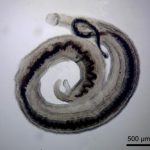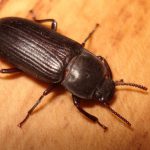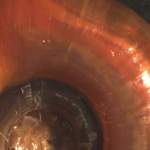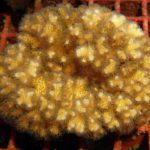
Schistosoma bovis gene prediction :
TrackHub of AUGUSTUS gene prediction
TrackHub of the IHPE for Schistosoma mansoni v5 & v7
ChIP-Seq data for the entire life cycle for H3K4me3 and H3K27me3
Schistosoma mansoni repetitive sequences
For assembly version 3.1 (scaffold level):
- RepBasePerpignanSma31 fasta-file
- RepBasePerpignanSma31 RepeatMasker output as gff-file
For assembly version 5.2 (chromosome level):
- RepBasePerpignanSma52 fasta-file
- RepBasePerpignanSma52 RepeatMasker output as gff-file
Please cite:
Lepesant J.M., Roquis D., Emans R., Cosseau C., Arancibia N., Mitta G. & Grunau C. (2012) Combination of de novo assembly of massive sequencing reads with classical repeat prediction improves identification of repetitive sequences in Schistosoma mansoni. Experimental Parasitology 130: 470-474. Doi 10.1016/j.exppara.2012.02.010
Female-specific repeats (more than 99% are on W-chromosome):
- W-specifc-repeats fasta-file
- W-specifc-repeats-31 RepeatMasker output as gff-file for assembly v3.1
- W-specifc-repeats-52 RepeatMasker output as gff-file for assembly v5.2
Please cite:
Lepesant J.M., Cosseau C., Boissier J., Freitag M., Portela J., Climent D., Perrin C., Zerlotini A. & Grunau C. (2012) Chromatin structural changes around satellite repeats on the female sex chromosome in Schistosoma mansoni and their possible rolein sex chromosome emergence. Genome Biology 13: R14. Doi 10.1186/gb-2012-13-2-r14
Schistosoma mansoni ChIP-Seq data
Reads in Fastq format:
SRA study SRP007636 : ChIP-Seq for S. mansoni miracidia, cercaria, adult (male+female)
Please cite:
Cosseau C., Azzi A., Smith K., Freitag M., Mitta G. & Grunau C. (2009) Native chromatin immunoprecipitation (N-ChIP) and ChIP-Seq of Schistosoma mansoni: critical experimental parameters. Molecular and Biochemical Parasitology, 166 : 70-76. Doi 10.1016/j.molbiopara.2009.02.015
Schistosoma mansoni genomic DNA NGS data
Reads in Fastq format:
SRA study SRP002052 : genomic NGS for S.mansoni DFO strain, male and female separated
Please cite:
Portela J., Grunau C., Cosseau C., Beltran S., Dantec C., Parrinello H. & Boissier J. (2010) Whole-genome in-silico subtractive hybridization (WISH) – using massive sequencing for the identification of unique and repetitive sex-specific sequences: the example of Schistosoma mansoni. BMC Genomics 11: 387. Doi 10.1186/1471-2164-11-387
Schistosoma mansoni adult male and female transcriptome after treatment of cercariae with latex
Please cite:
Augusto De Carvalho R., Tetreau G., Chan P., Walet-Balieu M.L., Mello-Silva C.C., Portes Santos C. & Grunau C. (2017) Double impact: natural molluscicide for schistosomiasis vector control also impedes development of Schistosoma mansoni cercariae into adult parasites. Plos Neglected Tropical Diseases 11: e0005789. Doi 10.1371/journal.pntd.0005789
Schistosoma mansoni sex specific transcriptome
Total RNA was extracted from male and female cercariae, schistosomula and adults. Schistosoma mansoni SmGH2 was used and maintained in Biomphalaria glabrata snail, strain BgGua and Swiss OF1 mice. In order to obtain unisexual clones of cercariae, monomiracidial infections of mollusks were performed. In vivo unisexual schistosomula were obtained by perfusions of the hepatic portal system between three and four weeks post-infection (PI) and were sorted into three finely defined stages (s#1, s#2 and s#3, from the younger to the older). Sorting criteria are based on caecum shape, acetabulum location and gynaecophoric canal appearance in males. Male and female adult worms were recovered from the unisexually infected mice after 49 days PI by perfusion.
Biomphalaria glabrata reference transcriptome
Contigs in Fasta format:
Reference transcriptome : Total RNA was extracted from 2 pools of 30 individuals of B. glabrata isolated from Brazil (BgBRE). Each pool was constituted from 10 juveniles, 10 adults and 10 senescent individuals. The transcriptome of B. glabrata was assembled de novo from 157 million of high quality trimmed paired-end 72 bp reads obtained by Illumina sequencing. We have performed a multiple k-mers assembly approach using Velvet and Oases. The obtained transcriptome consists of 117,269 transcripts of more than 100 bp.
Please cite:
Dheilly N.M., Duval D., Mouahid G., Emans R., Allienne J.F., Galinier R., Genthon C., Dubois E., Du Pasquier L., Adema C., Grunau C., Mitta G. & Gourbal B. (2015) A family of variable immunoglobulin and lectin domain containing molecules in the snail Biomphalaria glabrata. Developmental and Comparative Immunology 48: 234-243. Doi 10.1016/j.dci.2014.10.009

Pseudosuccinea columella reference transcriptome
Vector snail of Fasciola hepatica in Cuba.
A de novo transcriptome of P. columella was assembled using high-quality reads (quality > 38 phred score) from six sequenced samples using the default options of Trinity 2.0.6.1 method (Grabher et al., 2011) on the Galaxy Project server (Giardine et al., 2005). From a total of 592 million raw reads, the first consensus transcriptome for P. columella resulted into 158 837 contigs. To reduce its complexity, Trinity Super Assembly (Grabher et al., 2011) was applied to the de novo assembled transcriptome, and all transcripts shorter than 300 pb were removed, with 78 774 transcripts remaining for further analysis. Afterwards, we reduce hypervariable families by CD-Hit-est (Li and Godzik, 2006) to cluster transcripts with matches above 95% identity, resulting in 72 748 transcripts.
Reduced transcriptome (78774 contigs) fichier fasta:
Pcol-CD-HIT-EST95_Transcriptome_300.fasta
Full transcriptome (158 837 contigs):
Galaxy95-[Trinity_Assembled_Transcripts_P._col_R_-_S].fasta
Pocillopora damicornis reference transcriptome
Contigs in Fasta format:
Reference transcriptome: RNA-seq read de novo assembled (Velvet plus Oases plus TIGR) from adult P. damicornis (one clone only) exposed to acidification treatments (3 weeks at pH7.4 and 3 weeks at pH 8.3), thermal stress (Vidal-Dupiol et al. 2009 BMC Physiology), bacterial stress (Vidal-Dupiol et al. 2011 J Exp Biol), bacterial infection (Vidal-Dupiol et al. 2011 J Exp Biol) and control treatment.
Please cite:
Vidal-Dupiol J., Zoccola D., Tambutte E., Grunau C., Cosseau C., Smith K.M., Freitag M., Dheilly N.M., Allemand D. & Tambutte S. (2013) Genes related to ion-transport and energy production are upregulated in response to CO2-driven pH decrease in corals: new insights from transcriptome analysis. Plos One 8: e58652. Doi 10.1371/journal.pone.0058652
Pocillopora damicornis RNA-seq data
Reads in Fastq format:
SRA study SRP011059.1: RNA-seq for adult P. damicornis (one clone only) exposed to acidification. Treatments: 3 weeks at pH7.4 and 3 weeks at pH 8.3
Please cite:
Vidal-Dupiol J., Zoccola D., Tambutte E., Grunau C., Cosseau C., Smith K.M., Freitag M., Dheilly N.M., Allemand D. & Tambutte S. (2013) Genes related to ion-transport and energy production are upregulated in response to CO2-driven pH decrease in corals: new insights from transcriptome analysis. Plos One 8: e58652. Doi 10.1371/journal.pone.0058652
Reads in Fastq format:
SRA study : SRP029998 : RNA-seq for adult P. damicornis exposed to non virulent bacteria, virulent bacteria and thermal stress.
Please cite:
Vidal-Dupiol J., Dheilly N.M., Rondon R., Grunau C., Cosseau C., Smith K., Freitag M., Adjeroud M. & Mitta G. (2014) Thermal stress triggers broad Pocillopora damicornis transcriptomic remodelling, while vibrio coralliilyticus infection induces a more targeted immuno-suppression response. Plos One 9: e107672. Doi 10.1371/journal.pone.0107672
Pocillopora acuta reference genome
Sequences in fasta and annotations in txt/tab
Pocillopora_acuta_reference_genome : The sequencing strategy was based on four libraries with complementary insert size and sequencing depth (180pb, 100x; 3Kb, 25x; 8kb, 12x and 20 kb, 12x). The de novo assembly was performed with Platanus (352 Mb; 25,553 scaffolds; N50 171,375 bp). 36,140 genes were annotated by RNA-seq data and 64,558 by AUGUSTUS (Hidden-Markov model). Gene functions were predicted through Blast and orthology based approaches.
Please cite:
Vidal-Dupiol J., Chaparro C., Pratlong M., Pontaroti P., Grunau C. & Mitta G. (2019) Sequencing, de novo assembly and annotation of the genome of the scleractinian coral, Pocillopora acuta. bioRxiv:698688. Doi
Coleomegilla maculata reference transcriptome
Dinocampus coccinellae reference transcriptome
Contigs in Fasta format:
For the host total RNA was extracted from heads and abdomens of healthy and infected ladybirds (Coleomegilla maculate). For the parasite the wasp Dinocampus coccinellae total RNA was extracted from larvae collected before egression and after egression. RNA from 12 individuals was pooled for each experimental conditions and paired-end sequencing was performed with Illumina. A transcriptome was assembled de novo for each sample. Then, we used Cd-hit-est to generate the reference transcriptomes. The first transcriptome represented the transcriptome of healthy and infected ladybird. The second transcriptome represented the transcriptome of the wasp D. coccinellae larvae collected before and after egression.
Reference transcriptome of Coleomegilla maculata
Reference transcriptome of Dinocampus coccinelae
Please cite:
Dheilly N.M., Maure F., Ravallec M., Galinier R., Doyon J., Duval D., Leger L., Volkoff A.N., Missé D., Nidelet S., Demolombe V., Brodeur J., Gourbal B., Thomas F. & Mitta G. (2015) Who is the puppet master? Replication of a parasitic wasp-associated virus correlates with host behaviour manipulation. Proceedings of the Royal Society B 282: 20142773. Doi 10.1098/rspb.2014.2773

Tenebrio molitor reference transcriptome/proteome
A de novo transcriptome of T. molitor (enriched in transcripts involved in immune and stress responses) was assembled using pool RNA recovered from 150 individuals of various developmental stages (larvae, pupae, adults), sex (males and females) and physiological conditions, i.e., immune challenged individuals with either B. thuringiensis or S. entomophila bacteria, or individuals injected with the drug phenobarbital (0.1%), known to induce a detoxification response in insects.
Sequencing was carried out on an Illumina HiSeq2000 Genome Analyser platform using paired-end (2x100bp) read technology with RNA fragmented to an average of 380 nucleotides. Sequencing of two technical replicates was performed by Eurofins-mwg-operon and resulted in a total of 70 and 51 million reads. The de novo transcriptome assembly was carried out using Trinity (version 2014/09/07) with k-mers sized 25, T=50 and Jaccard similarity coefficient (option from trinity to reduce chimeric transcripts) using high-quality reads based on the quality score given in fastq files (FactQC, version0.10.1)
The T. molitor de-novo transcriptome contains 110,963 transcripts with a N50 (sequence length of the shortest contig at 50% of the total transcriptome length) of 1261 nucleotides.
Traduction of the transcriptome was performed using FrameDB (version 1.2.0) and Uniprot (uniprot.org, version of 29 April2015). The resulting predicted proteins (45,505) were compared using BLASTP (version 2.2.30+, e-value of 10-5) and Tr. castaneum proteome available at Uniprot (version 14April2015).
Full transcriptome: Tenebrio_96637transcriptome.fa
Full proteome: Tenebrio_45505proteome.fasta
Notos : Outil qui calcule les rapports CpG observés / attendus et prédit le type de méthylation de l’ADN.
Please cite:
Bulla, I., Aliaga, B., Lacal, V. et al. (2018) Notos – a galaxy tool to analyze CpN observed expected ratios for inferring DNA methylation types. BMC Bioinformatics 19: 105. Doi: 10.1186/s12859-018-2115-4



